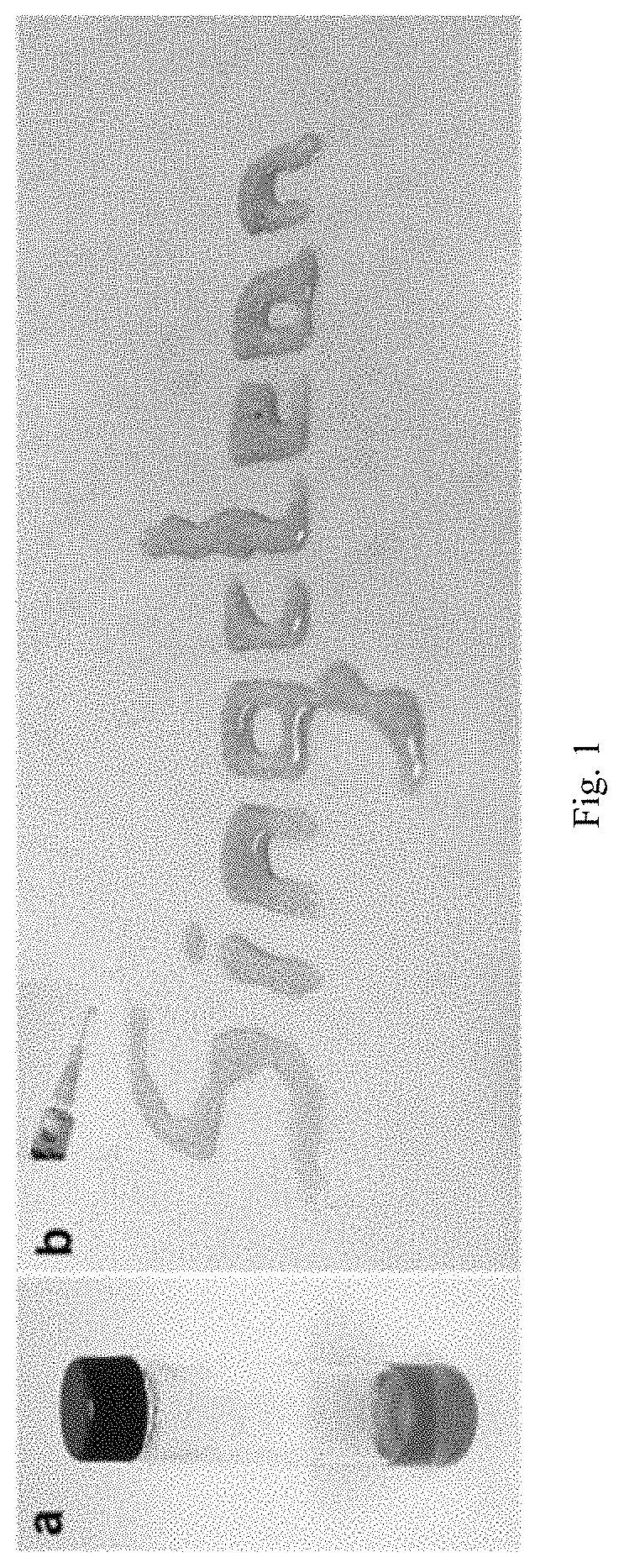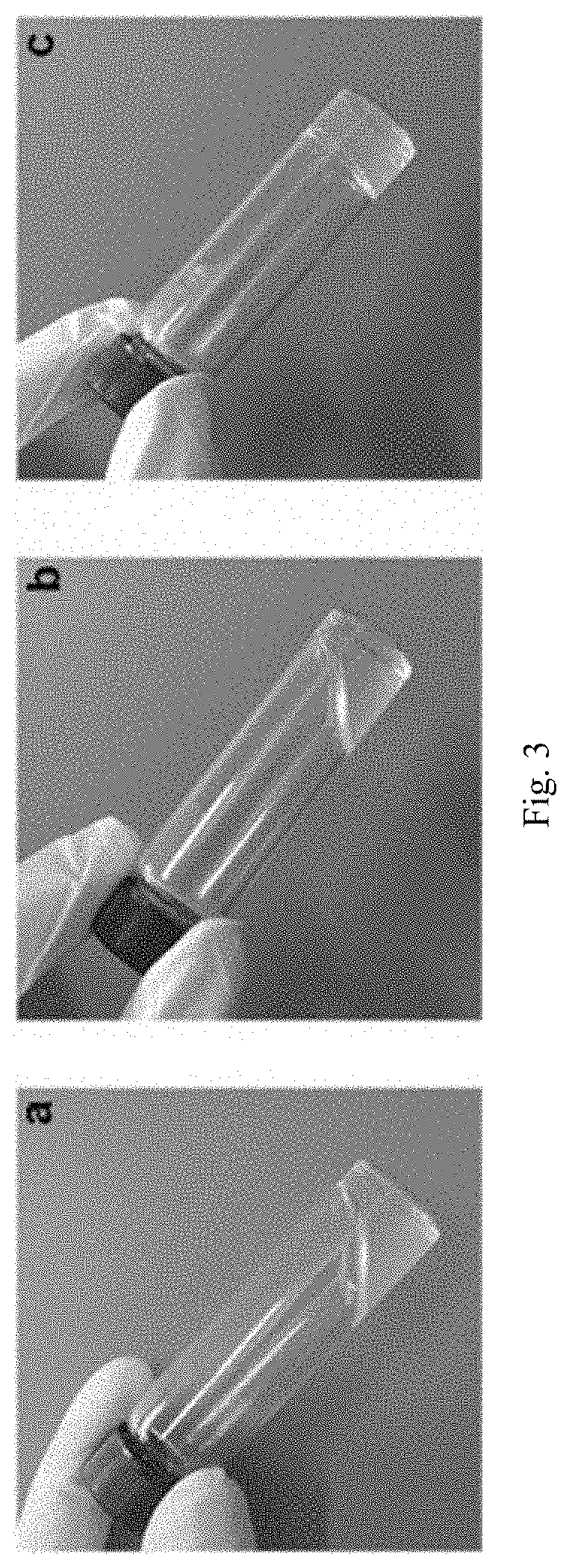Injectable Temperature-sensitive Composite Hydrogel Containing Adipose-derived Mesenchymal Stem Cells and Preparation Method and Application Thereof
a technology of composite hydrogel and mesenchymal stem cells, which is applied in the field of biomedical materials and tissue engineering, can solve the problems of articular cartilage injury, tens of millions of patients' inconvenience to daily life and mental pain, and recurrence ra
- Summary
- Abstract
- Description
- Claims
- Application Information
AI Technical Summary
Benefits of technology
Problems solved by technology
Method used
Image
Examples
example 1
[0044]The present example is a preparation method of an injectable temperature-sensitive hydroxypropyl chitin hydrogel, which comprises the following steps:
[0045]S1. chitin powder was dissolved in a mixed alkali solution containing 11 wt % sodium hydroxide and 4 wt % urea, epoxypropane was added therein, then in an ice bath, the mixture was mechanically stirred for reaction for 2 h, then heated to 5° C. for reaction for 24 h, heated to 15° C. for reaction for 6 h, and finally cooled to 4° C. and was allowed to stand for 2 h, to prepare hydroxypropyl chitin. And hydroxypropyl chitin underwent dialysis, freeze drying and dissolution to obtain a 2.5 wt % hydroxypropyl chitin solution.
[0046]S2. Genipin was added to the hydroxypropyl chitin solution of S1, and the mixture was placed at 37° C. to obtain an injectable temperature-sensitive hydroxypropyl chitin hydrogel, which contains Genipin with a concentration of 0.02 wt %.
example 2
[0047]The present example is a preparation method of an injectable temperature-sensitive hydroxypropyl chitin hydrogel containing adipose-derived mesenchymal stem cells. The preparation method comprises the following steps:
[0048]S1. chitin powder was dissolved in a mixed alkali solution containing 11 wt % sodium hydroxide and 4 wt % urea, epoxypropane was added therein, then in an ice bath, the mixture was mechanically stirred for reaction for 2 h, then heated to 5° C. for reaction for 24 h, heated to 15° C. for reaction for 6 h, and finally cooled to 4° C. and was allowed to stand for 2 h to prepare hydroxypropyl chitin. And hydroxypropyl chitin underwent dialysis, freeze drying and dissolution to obtain a 2.5 wt % hydroxypropyl chitin solution.
[0049]S2. adipose-derived mesenchymal stem cells were re-suspended with the hydroxypropyl chitin solution prepared in S1, and the injectable temperature-sensitive hydroxypropyl chitin solution containing adipose-derived mesenchymal stem cell...
example 3
[0051]The present example is a preparation method of an injectable temperature-sensitive composite hydrogel containing adipose-derived mesenchymal stem cells, which comprises the following steps:
[0052]S1. chitin powder was dissolved in a mixed alkali solution containing 11 wt % sodium hydroxide and 4 wt % urea, epoxypropane was added therein, then in an ice bath, the mixture was mechanically stirred for reaction for 2 h, then heated to 5° C. for reaction for 24 h, heated to 15° C. for reaction for 6 h, and finally cooled to 4° C. and allowed to stand for 2 h to prepare hydroxypropyl chitin. And hydroxypropyl chitin underwent dialysis, freeze drying and dissolution to obtain a 2.5 wt % hydroxypropyl chitin solution.
[0053]S2. the hydroxypropyl chitin solution was mixed with a collagen solution and a sodium hyaluronate solution to prepare a composite solution, in which the concentration of the collagen solution was 1 wt %, and the concentration of the sodium hyaluronate solution was 1 ...
PUM
| Property | Measurement | Unit |
|---|---|---|
| Temperature | aaaaa | aaaaa |
| Fraction | aaaaa | aaaaa |
| Fraction | aaaaa | aaaaa |
Abstract
Description
Claims
Application Information
 Login to View More
Login to View More - R&D
- Intellectual Property
- Life Sciences
- Materials
- Tech Scout
- Unparalleled Data Quality
- Higher Quality Content
- 60% Fewer Hallucinations
Browse by: Latest US Patents, China's latest patents, Technical Efficacy Thesaurus, Application Domain, Technology Topic, Popular Technical Reports.
© 2025 PatSnap. All rights reserved.Legal|Privacy policy|Modern Slavery Act Transparency Statement|Sitemap|About US| Contact US: help@patsnap.com



